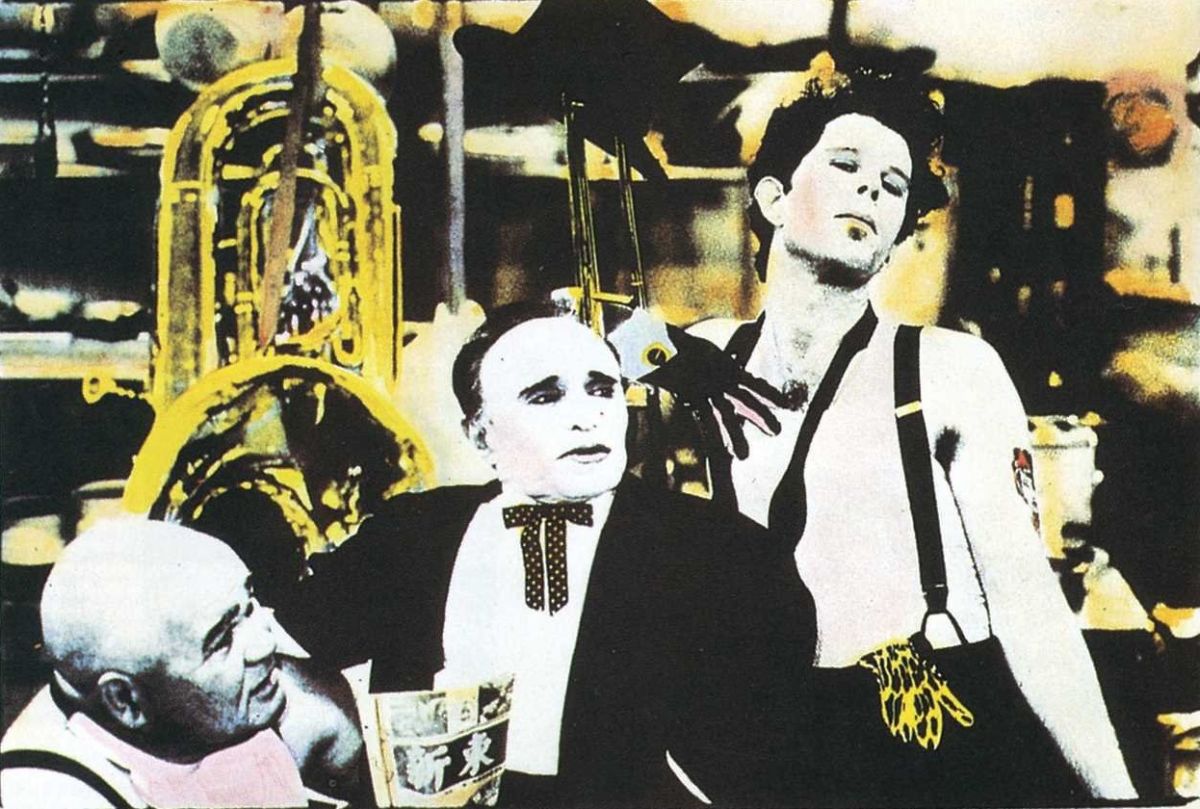Timeline: 1983 - Tom Waits Finds His True Voice

By Dave Swanson - Summit FM Contributor
After several years of haunting the clubs of the world and issuing a variety of albums, in September of 1983, Tom Waits found his true voice with the release of his eighth album, 'Swordfishtrombones.'
He began his professional musical journey in as the '60s wove into the '70s. Adopting a displaced beatnik style, his persona matched his music in a blend of ragged, dusty and jumbled chords and words and attire. Taking much inspiration from the original Beat movement of the 1950s, Waits stood out in the crowd where Bukowski, Kerouac and Ginsburg weren't the flavor of the day.
His down and out persona was matched by his down and out balladry and storytelling, most often with piano as his sole accompaniment, Wait's songs struck a chord with those who heard him, gaining him an enthusiastic, if offbeat, following in the early 1970s.
Songs like 'The Piano Has Been Drinking,' 'Pasties and a G String,' and 'Heart Of A Saturday Night' all became trademark songs, showcasing his unique take on blues, folk, jazz and vaudeville all rolled into one. This was a true trip through the underbelly of America, tales told of the back alleys, desolate streets, and gutters of America, sung is his trademark grave and gin soaked voice.
Early underground succes with albums like 'Small Change' and 'Heart Of Saturday Night' got people interested and by the end of the decade, 'Blue Valentine' and 'Heart Attack And Vine' had critics cheering and fanbase building. It was at that point when Waits made a brave move. Change up the formula and sail into uncharted water!
Released in September of 1983, 'Swordfishtrombones' stood apart from its predecessors, somewhat glaringly. Gone were the seedy streets of the city, replaced by more surreal terrain. This was Kurt Weill and Bertolt Brecht riding with the blues. Waits’ voice was now a stunning mix - one part Howlin' Wolf, one part Captain Beefheart and one part carnival barker. This was a tragic run down circus from the 1930s with gritty blues flowing within twisted jazz and Waits' own version of rock and roll. This was an abstract trip through the American psyche, an album Waits said was based on "journal entries from an exotic odyssey."
For as many of the old fans as it may have confused, it turned as many or more onto this offbeat character, but where did he fit in? It wasn't found among any other flavors of the day. It didn't sound like jangly guitar 'college rock,' or punk, new wave, heavy metal, post punk. It really was beamed in from a distant world and perhaps not fitting in helped him find his audience.
The album moves on from his signature piano and vocal template to include a small combo and a variety of instrumentation. We get horns, organ, electric guitars, harmonium, marimba, synthesizers, various percussion and other effects to create the unique style of sounds. "I was trying to find musical instruments that were more nightmarish or dreamlike," Waits said in a 1983 interview. Meanwhile, the lyrics twist together flashes of comedy, surrealism, desperation, joy and abstract thought into the tales told.
Rolling Stone called the album "so weird that Asylum Records decided not to release it, but it’s so good that Island was smart enough to pick it up," noting that most of the songs had "gorgeous Waitsian melodies, which haven’t been collected in such quantity since his ten-year-old debut album.
'Sworfishtrombones' was the first of what one could call a ‘holy trinity’ within Waits' catalog. He would follow it with 'Rain Dogs' in 1985, a more fleshed out and more rocked out take on this album, followed by 'Frank's Wild Years,' continuing the tale of Frank, started here, and inflating the approach significantly in sound and story. A live album and soundtrack would come next before Waits unleashed what is arguably his signature statementt, 'Bone Machine' in 1992.
Tom Waits has also played roles in a long list of films and continued to make record, though nothing since 2011's 'Red As Me.' He was inducted into the Rock and Roll Hall Of Fame in 2011 by Neil Young. From playing the almost cliché beatnik role in his early years, through the development of the Tom Waits we’ve come to know, this is a significant point in that journey.






